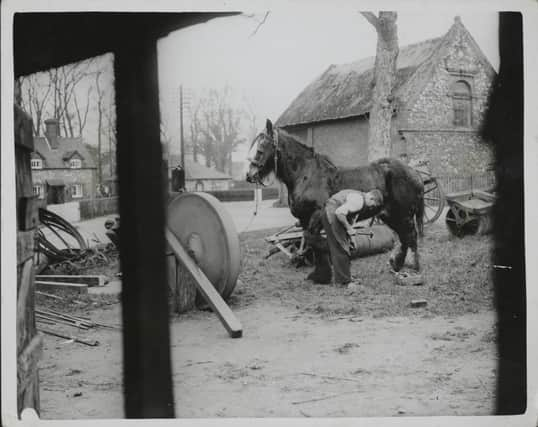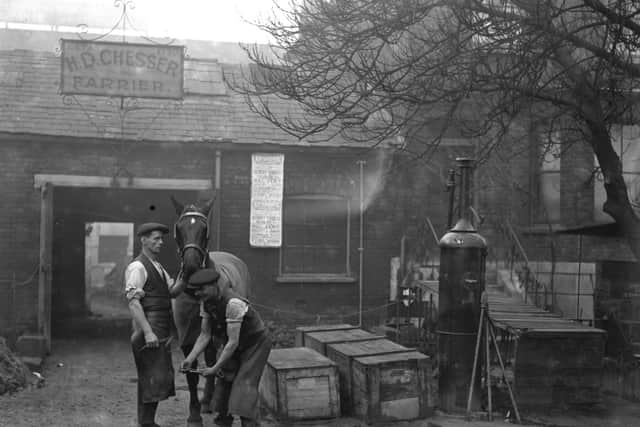Nostalgia: When smithy’s anvil was at the heart of every village


While farriers specialised in the maintenance of horses’ hooves, the blacksmith was a general purpose toolmaker and very often a pillar of the community.
There had been blacksmiths in Britain since around 450BC and by the 13th century there was not a village in England without one.
Advertisement
Hide AdAdvertisement
Hide AdEven after the Industrial Revolution they remained part of the landscape, and during the 19th century, most of the more remote farms in Yorkshire’s East Riding had a smithy on site. It was considered better business sense than taking the horses to town.


But the same acumen eventually brought mechanisation to the land and signalled the end of the equine era. By the end of the Second World War only a few local farriers remained.
Yet the fascination never went away, and there remain at least 600 traditional blacksmiths in the UK, shoeing horses turning out hand-made tools and crafts for discerning audiences.
Support The Yorkshire Post and become a subscriber today. Your subscription will help us to continue to bring quality news to the people of Yorkshire. In return, you’ll see fewer ads on site, get free access to our app and receive exclusive members-only offers. Click here to subscribe.
Comment Guidelines
National World encourages reader discussion on our stories. User feedback, insights and back-and-forth exchanges add a rich layer of context to reporting. Please review our Community Guidelines before commenting.